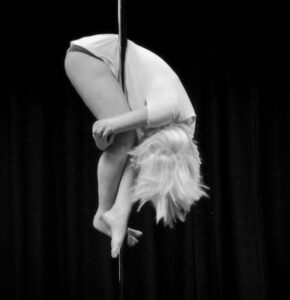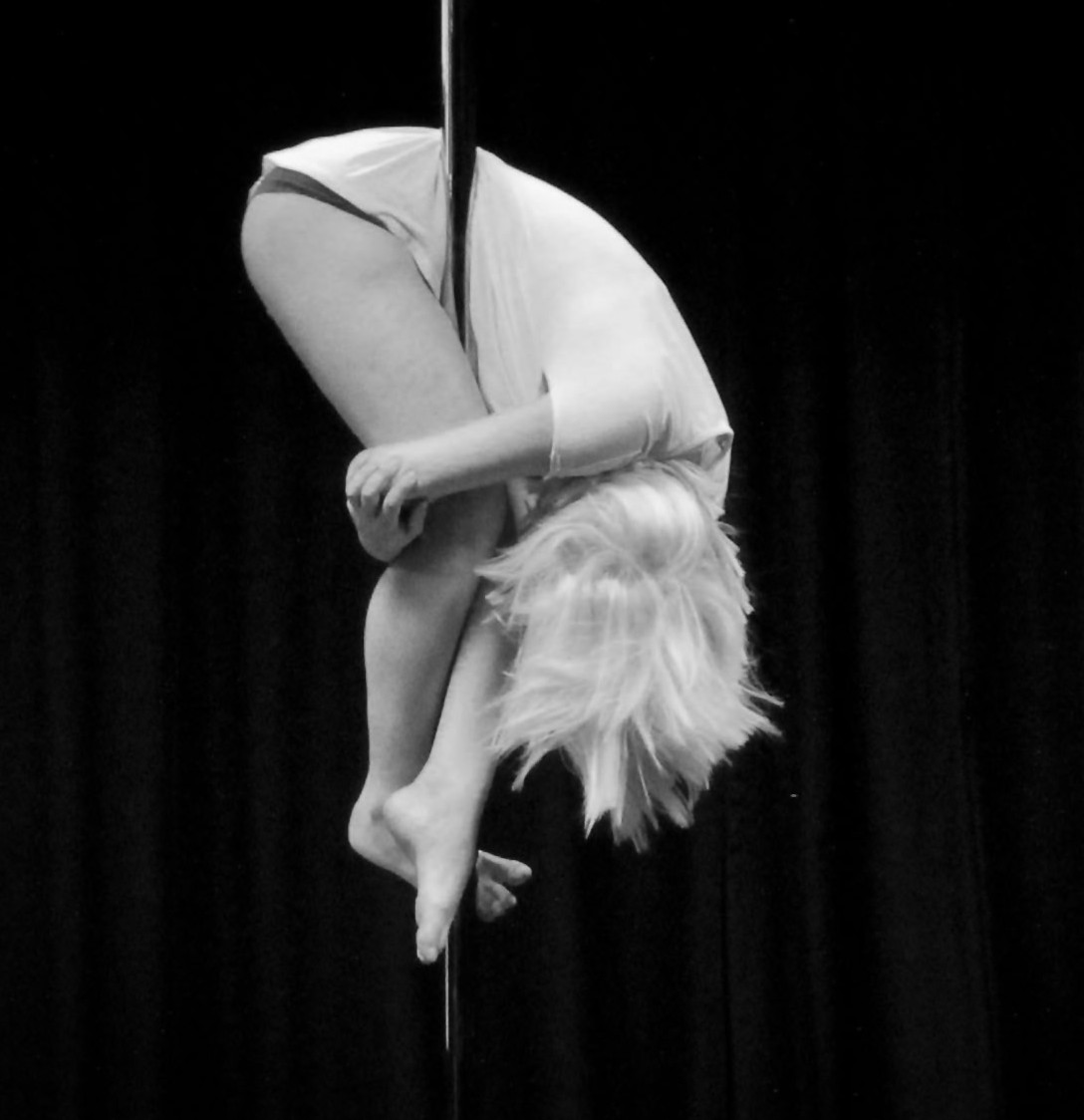Stillness in Pole Dance
 Stillness in pole dance is something that we rarely see and I wonder why this is. Why do pole dancers feel the need to move at such a fast pace as if a pause would slow them down? I’m a fan of varied dynamics and I think slowing the movement down and taking some time to stop and let the audience understand your work is generally a positive thing if it is delivered naturally. Stopping in the middle a dance work at a random points is very different to finding the natural pausing point where it is still very much part of the performance. Some choreographers argue that a pause can be stronger than any other part of their work if happens in the right place. Furthermore, a pause allows both physical rest and mental rest for the performer. If the movement is so fast paced that is becomes chaotic it can seriously effect performance quality and the way the movement is received.
Stillness in pole dance is something that we rarely see and I wonder why this is. Why do pole dancers feel the need to move at such a fast pace as if a pause would slow them down? I’m a fan of varied dynamics and I think slowing the movement down and taking some time to stop and let the audience understand your work is generally a positive thing if it is delivered naturally. Stopping in the middle a dance work at a random points is very different to finding the natural pausing point where it is still very much part of the performance. Some choreographers argue that a pause can be stronger than any other part of their work if happens in the right place. Furthermore, a pause allows both physical rest and mental rest for the performer. If the movement is so fast paced that is becomes chaotic it can seriously effect performance quality and the way the movement is received.
Know the Performance Environment
The environment of the stage is so important, particularly when performing in new space because you need to be able absorb the reason why you’re there. I mean, of course you know why you’re there, you’re there to perform, but what you are trying to say and how can you say it to that particular audience? Dancers think on the spot and are often given the opportunity to make their own decisions whilst they are on stage, in fact, most choreographers I know would revel in the fact that their dancers can think for themselves and adjust accordingly. Use this strength in every performance. Think on the spot and adapt to the space. Even if you are doing a low key performance in a studio for 3 people, the same rules apply.
Stage Presence
Stage presence and charisma are subjects for another post, but I know from experience that a pause is probably one of the most powerful tools you can use to strengthen stage presence. The only thing the audience has to focus on in that moment is how they feel about the energy you’re giving out. Throughout the short pauses in my autobiographical solo dance work I felt as though time stood still. I felt an energy about myself that I don’t feel at any other time other than when I am dancing. Likewise I felt an energy from the audience, I knew they were listening and that in turn kept the energy going until the end. A pause can give an opportunity to connect.
Understand the Pause
Choreographer make decisions based on how they see the movement in their mind in comparison to how it looks in real life on the bodies of their dancers. If they are watching their dancers and feel there is a need for a pause they will communicate this to their dancers in great detail. The dancer really has to understand the movement to be able to deliver it as it was envisioned. Likewise, as a solo performer with self-choreographed work I know 100% why I am pausing and in that moment I rebuild my energy and use the audience to decide how long it lasts.
Think about it this way; compare pauses in dance work with an actually conversation. Think about a conversation you have had with someone who speaks really, really fast. You become lost in their words and you go off track because you’re wondering what it was that they said two sentences ago. Receiving dance is a very similar process. Like I said earlier, I don’t suggest throwing in a pause anywhere you feel like. It has to happen naturally otherwise it will feel and look awkward, but this can be avoided if you ensure that you or your dancers know why the pause is there.
Don’t forget you can purchase “Speaking through Movement” for a full guide on how to create your own pole dance work.




No Comments